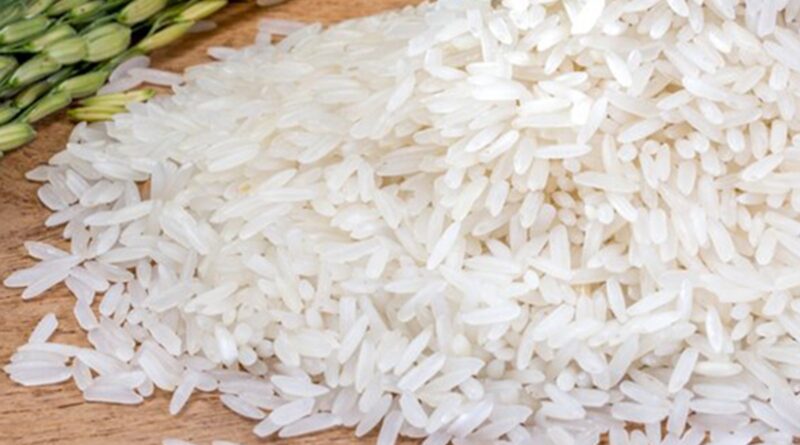How supply chain disruptions impact rice export prices?
By Anshul Garg
Rice is the staple food for billions globally and when unforeseen circumstances disrupt its supply chain to the worldwide markets, significant impact ensues. India is the second largest producer of rice in the world, and when its export is threatened through supply line disruptions, concern about maintaining food security across key geographies rises.
The term supply line disruptions is often a broad issue. It can be a result of numerous issues, from climatic to logistics. However, various safeguards are maintained precariously by the agriculture industry in India to avoid them. For example, the Indian rice exporters adopted a more proactive stance during the farmer protests in northern India in 2024 that left the highways to seaports blocked. This proactive stance included charting new routes to the Indian ports, keeping the supply chain intact and the export machinery running without any hiccups.
But simple solutions like these are not always available for exporters as unforeseen circumstances often disrupt the rice supply chain, sending the rice export prices in limbo. Let’s discuss them in more detail.
External factors
In October 2023, when the Red Sea crisis began, global trade seemed to come to a halt. Many governments deployed naval military assets to ensure safe trade passages to cargo ships containing thousands of containers, many of which carried Indian rice to the Middle East, Europe and the Americas. During this time, exporting rice through the Gulf of Aden, Bab-El-Mandeb and the Suez Canal became increasingly risky — not only for profits but for the security of the sailors. The shipping costs also reflected this instability by a significant rise, which led to a delay in rice exports. Unlike other fast-moving consumer goods, retail prices of rice cannot be increased with short notice, which is why exporters had to absorb the brunt of increasing shipping costs. All these reasons were the contributing factors to reroute rice exports through Riyadh in Saudi Arabia, where the authorities played a critical role in ensuring food safety and price across key markets.
Lack of logistics solutions
Indian rice sellers often establish agreements with logistics companies to ensure uninterrupted and cost-effective export solutions. However, periodic challenges arise when supply chains are disrupted due to a lack of containers. For example, when the Suez Canal was blocked for six days in March 2021, many cargo ships were stuck at either entry of the canal, leading to a superficial crisis of containers which are critical for shipping products. While the canal was stuck for only six days, thousands of containers were also delayed in key ports that act as hubs for shipping rice exports and caused supply chain disruptions worldwide. During this time, shipping prices saw an increase between 2.5-4 times depending on the destinations.
Another example could be during Ramadan when demand for Indian rice skyrockets in the Middle-Eastern countries. Increasing demand leads to an acute shortage of containers for exporting rice to these key markets every year and rice exporters often have to face the challenge of maintaining retail prices amidst rising shipping costs.
Climate changes
India is the second-largest rice producer and the largest exporter of rice in the world. The Indian agricultural sector plays a significant role in maintaining food security across many nations where rice is treated as a staple food. However, fluctuations in climate conditions like extreme heat or rain cause low yields and crop inconsistency that directly impact the export market. For example, international prices for Indian rice were the highest in 11 in 2023, as climate changes across the Indian subcontinent resulted in significantly low yields. This resulted in the Indian government to ban exporting various types of rice to control the prices in the domestic wholesale market, a decision that was also a contributory factor for the price hike in retail prices in key international markets. In layman’s terms, increased yields of rice directly result in price cuts, however, reduced yields cause the price to jump.
Disruptions of packaging materials
Various types of Indian rice scheduled to be exported are packaged using jute bags and plastic pouches (POPP). While India is the largest producer of jute in the world, in case of jute cultivation disruption, jute bags also become more expensive. This directly translates into hiked rice export costs. Similarly, if POPP prices increase it also impacts the costs of rice packaging, thus making exports more expensive than before. However, unlike external factors or logistics challenges, packaging obstacles are not constant and rice exporters are unable to change retail prices based on it. This means that Indian rice exporters are often left with covering the added expenses themselves, thus maintaining retail prices in key international markets themselves.
Unlike other FMCG products, rice grains cannot be stored indefinitely in warehouses, primarily to maintain food security across the world. Indian rice grains hold a substantial grip on the international market for their quality and competitive price, made possible by the bulk of exports that take place through Indian ports. However, the export of these grains is often dependent on hassle-free supply chains, which experience periodic fluctuations because of unforeseen challenges and cannot be controlled productively. The majority of the Indian agriculture sector remains unorganised, and international exports directly translate to the much-needed profit for the sector to operate. This symbiotic relationship between the Indian agricultural sector, especially for rice exporters and key international markets is one of the most significant contributors to the Indian economy. A collaborative effort domestically and internationally will not only assist in maintaining food security but regulate prices in a cost-effective manner as well.
This article has been republished from The Financial Express.

